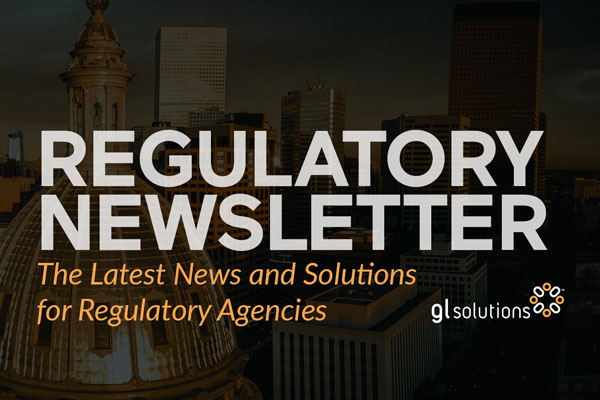As a government agency, you face constant pressure to improve efficiency, transparency and accountability for the public you serve. Your agency reporting processes often consume significant time and resources, potentially hindering your staff’s ability to focus on core services and strategic initiatives. By embracing automation, however, you free up valuable staff time and enhance the accuracy and timeliness of your reports. Learn five tips for streamlining your regulatory agency’s reporting through automation.
Challenges of Current Reporting Processes
Your regulatory agency likely grapples with numerous challenges in its current reporting processes. These obstacles hinder efficiency and accuracy, ultimately impacting your ability to serve the public effectively.
First, analyze your current reporting process to identify pain points and inefficiencies. Many government agencies rely on manual data entry and disparate systems, leading to several challenges:
- Time-Consuming Tasks: Manual data collection and entry consume significant time, diverting resources from more critical tasks.
- Human Errors: Repetitive tasks increase the risk of errors, affecting the accuracy and reliability of reports.
- Data Silos: Disparate systems lead to data silos, making it difficult to access and consolidate information.
- Delayed Reporting: Manual processes often result in delays, hindering timely decision-making.
According to a survey by the American Productivity & Quality Center (APQC), 68% of government employees believe inefficient processes negatively impact their productivity. This statistic underscores the critical need for streamlining your regulatory agency’s workflows and implementing effective process management strategies to enhance employee efficiency and overall organizational performance.
Benefits of Automation in Government Reporting
Implementing automation in your reporting processes with regulatory software yields numerous advantages, transforming how your agency operates and delivers value to the public.
- Increased Efficiency: Automation significantly reduces the time required for data collection and reporting, allowing employees to focus on higher-value tasks. Automated tools gather and process data from various sources in a fraction of the time it would take manually. This efficiency allows agency staff to engage in more strategic activities, such as data analysis and decision support. Transitioning from manual processes to digital ones significantly saves government agency staff time in data collection. According to the report, How much time and money can AI save government, AI and digital transformation free up to 30% of the government workforce’s time over five to seven years by automating routine tasks and improving efficiency.
- Improved Accuracy: Automated systems minimize human errors, enhancing data quality and report accuracy. Automation ensures that data is entered consistently and accurately, reducing the risk of errors that occur with manual entry. This accuracy leads to more reliable reports and better decision-making.
- Real-Time Reporting: Automation enables real-time data processing and reporting, supporting timely and informed decision-making. Real-time reporting tools continuously update dashboards and reports with the latest data, providing decision-makers with current insights. This capability is particularly valuable in dynamic environments where timely information is crucial.
- Cost Savings: By reducing manual labor and errors, automation helps agencies save costs associated with rework and inefficiencies. Automated processes require less human intervention, leading to cost savings in terms of labor and the reduction of errors and associated correction costs. In fact, according to a report by McKinsey & Company, four out of five government processes are “at least partially automatable, with the potential to reduce costs by at least 30 percent”.
Key Areas for Automation Implementation
As your state regulatory agency strives to streamline reporting processes and enhance overall efficiency, implementing automation in strategic areas with regulatory agency software yields significant benefits. By leveraging advanced technologies and tools, you transform time-consuming, error-prone manual tasks into streamlined, accurate, and rapid automated processes. This shift not only saves valuable time and resources but also improves the quality and reliability of your regulatory agency’s reports, enabling faster and more informed decision-making.
To maximize the benefits of automation, focus your efforts on these critical areas of the reporting process:
- Data management: Centralize your data to increase the efficiency and accuracy of your regulatory agency. Instead of storing data in multiple locations, such as spreadsheets, filing cabinets and more, modernize your data management. Use a regulatory system to house all of your regulatory data.
- Data Validation: Implement automated data validation to ensure accuracy and consistency, reducing the need for manual checks by your agency staff. Automated validation tools can check data against predefined rules and flag any discrepancies for review. This process ensures that only accurate and consistent data enters your reporting system, improving the overall quality of your reports.
- Reporting and Analytics: Use a cloud-based regulatory software solution to automate your report generation and create interactive dashboards for real-time insights. The right digital platform offers powerful visualization capabilities, allowing you to present data in a clear and engaging manner. Automated reporting tools generate complex reports with minimal human intervention, saving time and effort.
Automation revolutionizes the reporting process for state government agencies. By identifying reporting needs, choosing the right regulatory software, and implementing automated workflows, you streamline data collection, enhance accuracy, and enable real-time reporting. Learn how a Business Intelligence Reporting feature helps your state regulatory agency increase staff efficiency and better serve the public.
- Compliance Monitoring: Automate your compliance checks and audit trails to ensure adherence to regulations and simplify regulatory reviews. Compliance automation tools continuously monitor your data and processes for compliance with relevant regulations. This ongoing monitoring helps you identify and address compliance issues promptly, reducing the risk of regulatory penalties.
5 Tips for Streamlining Reporting Through Automation
- Define Clear Goals: Establish specific objectives for automation, such as reducing your reporting time by 50% or improving data accuracy by 30%. Clear goals provide direction and help measure the success of your automation initiatives.
- Choose the Right Software: Select a regulatory software solution that meets your agency’s needs. Consider factors such as ease of use, scalability and security when choosing automation tools. Ensure that the cloud-based platform you select handles your specific data and reporting requirements.
- Integrate Systems: Use APIs to connect different platforms, eliminating data silos and ensuring a unified reporting process. Integration allows data to flow seamlessly between systems, providing a comprehensive view of your data. For example, integrate your background check information with your reporting software to automate background check information reporting.
- Train Staff: Provide comprehensive training to ensure your employees use the regulatory software effectively and understand the benefits. Training helps your employees feel comfortable with new tools and processes, reducing resistance to change.
- Continuous Improvement: Improve continuously by tracking metrics at your agency, such as how much time your staff takes to process an application. Monitoring the process enables your regulatory agency to identify bottlenecks in the process and opportunities for improvement.
Modernizing Reporting at your Regulatory Agency
GL Solutions helps your regulatory agency streamline reporting and modernize processes with our Agency Transformation service. Contact us to learn more.
Time to Modernize
GL Solutions helps your regulatory agency run, grow and adapt through modern software and automation that helps solve your agency’s greatest challenges. To learn more, contact us.
To receive the latest regulatory news delivered to your inbox each week, subscribe to our newsletter.


